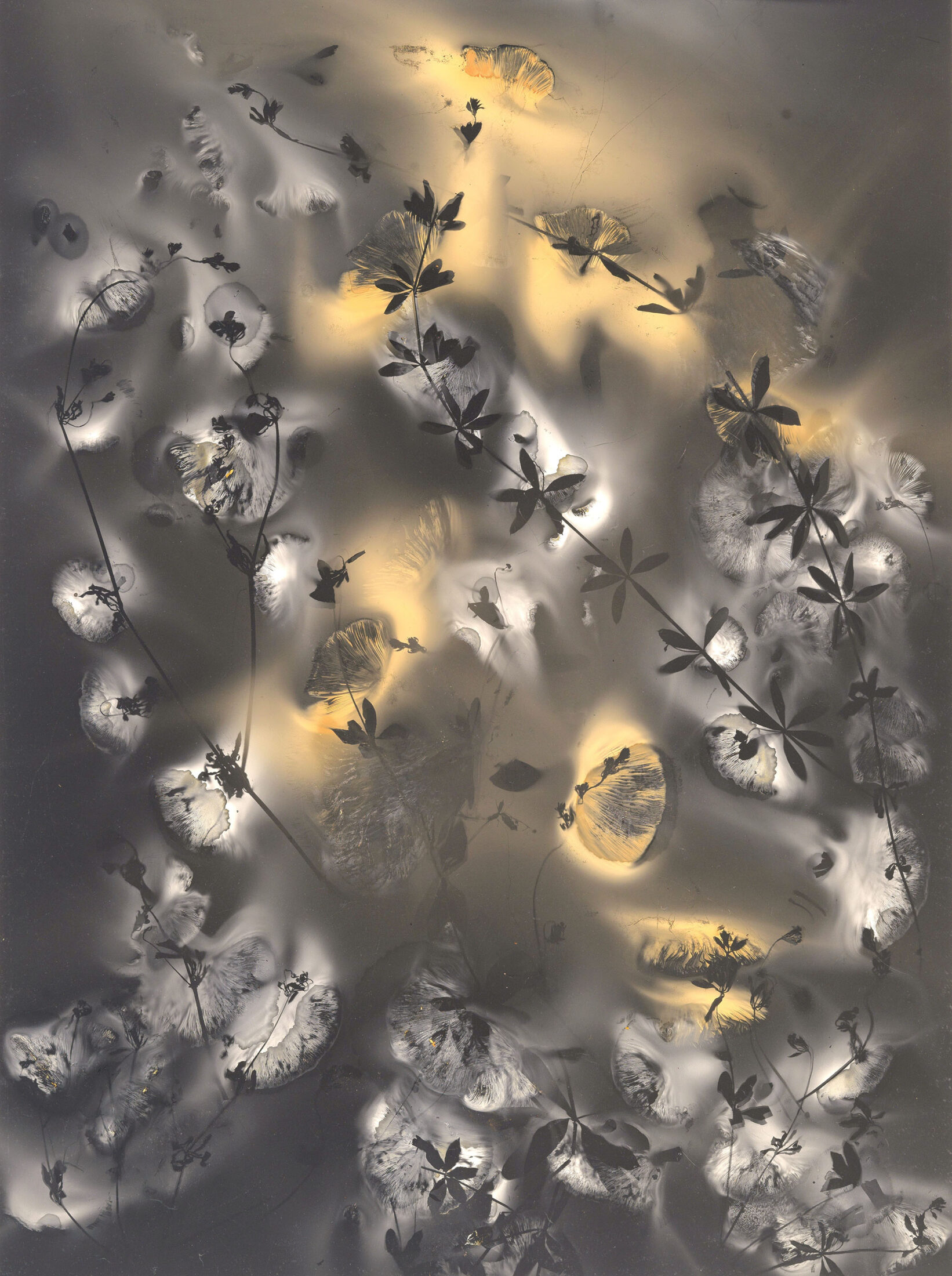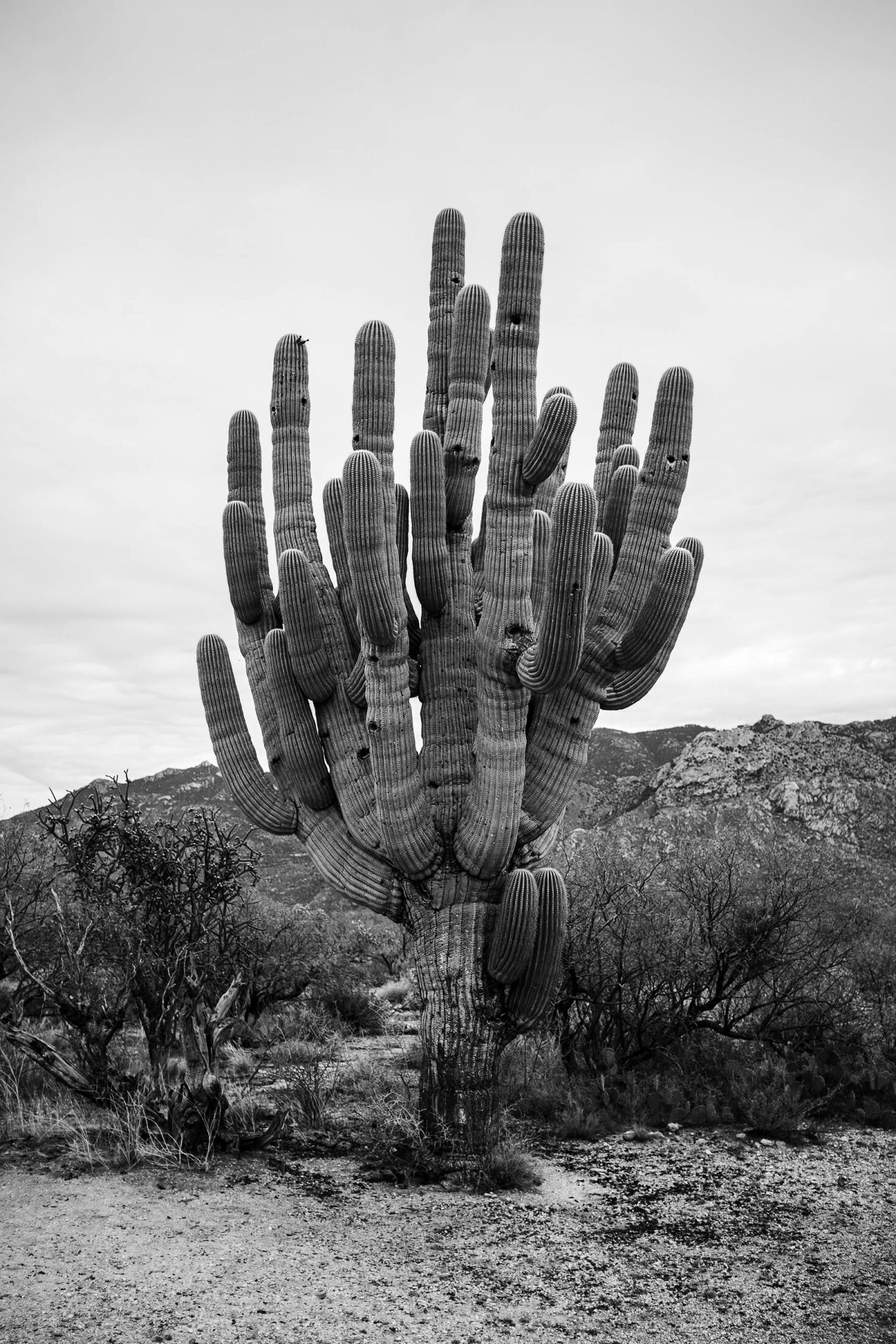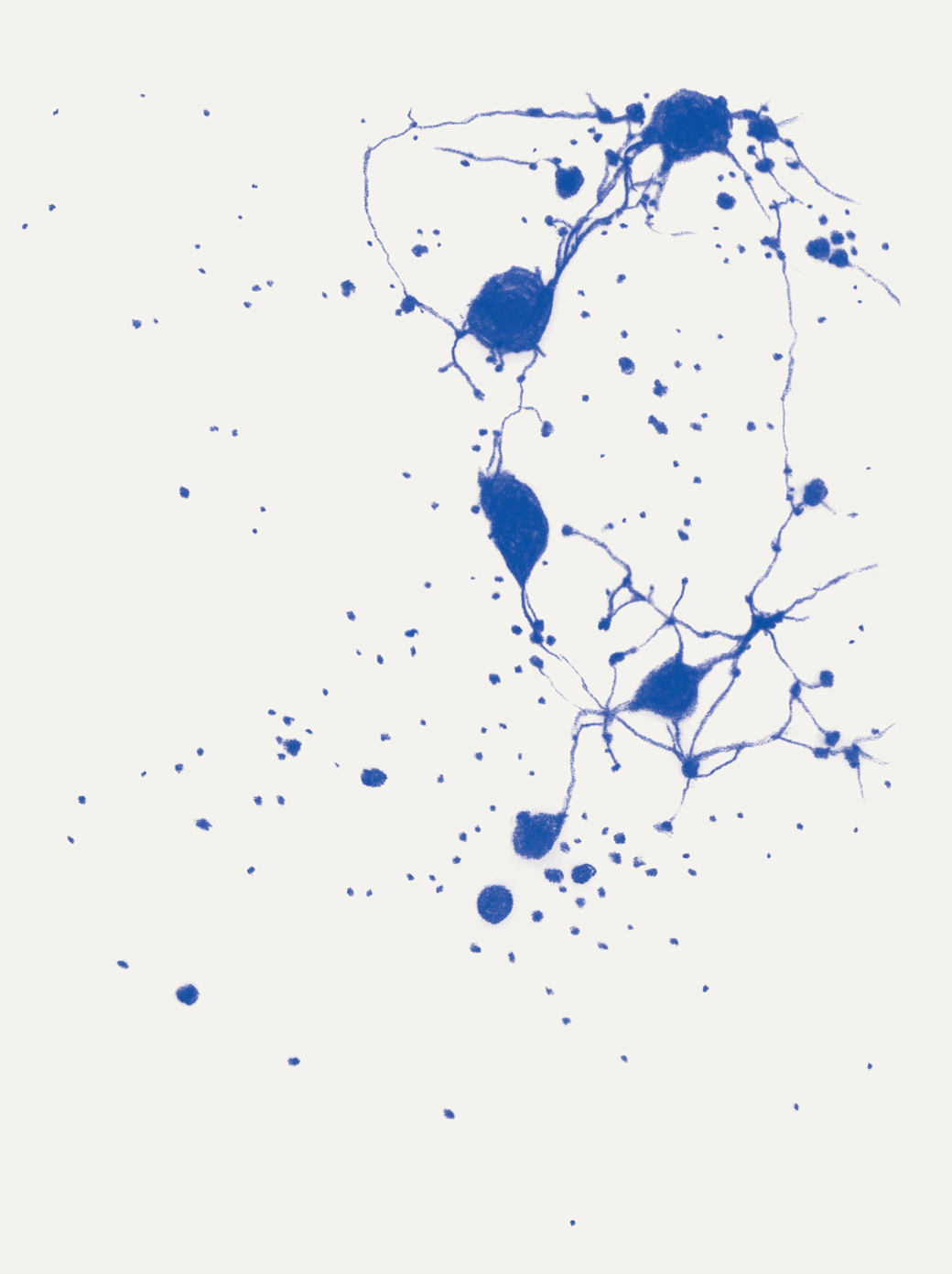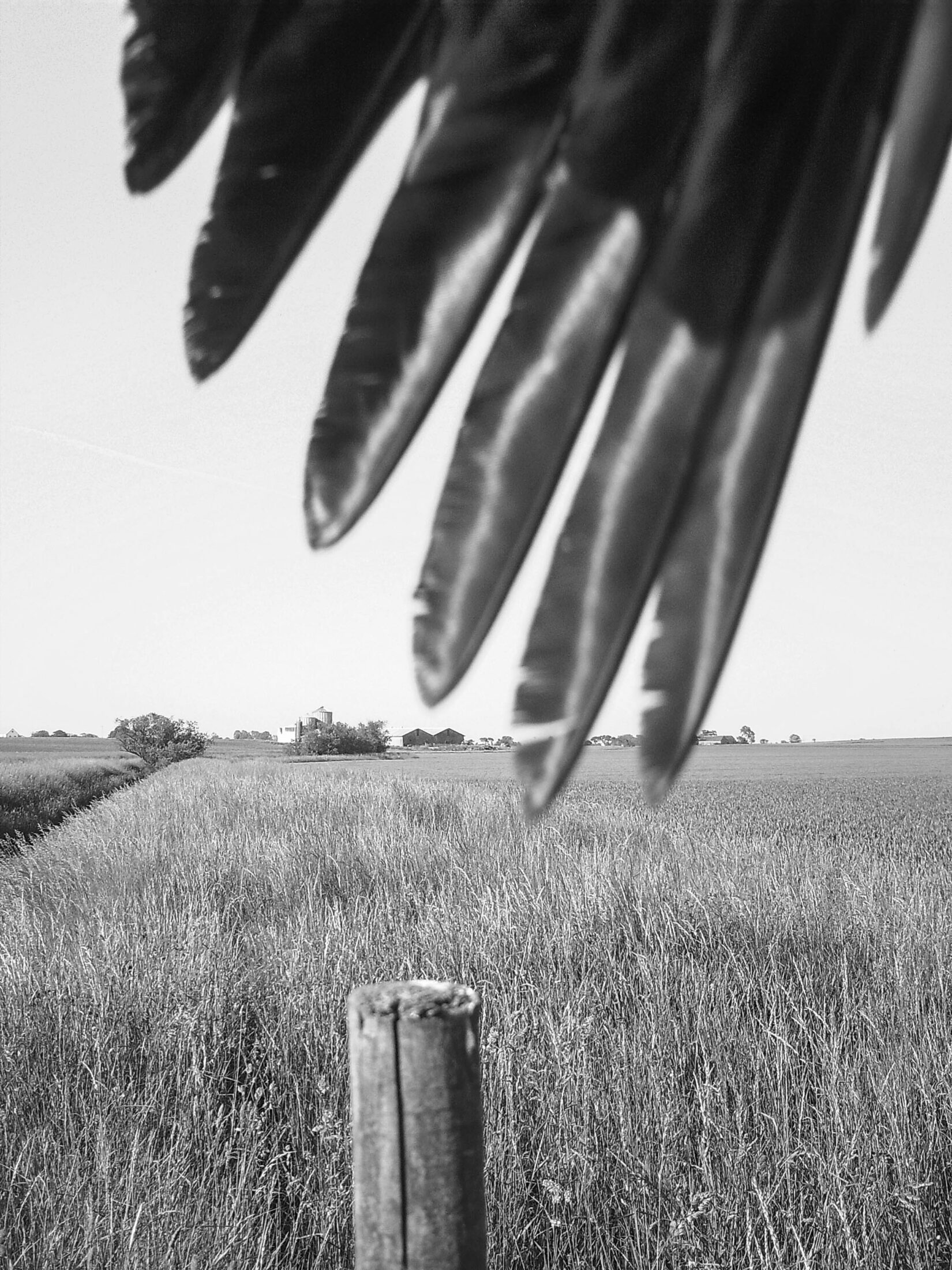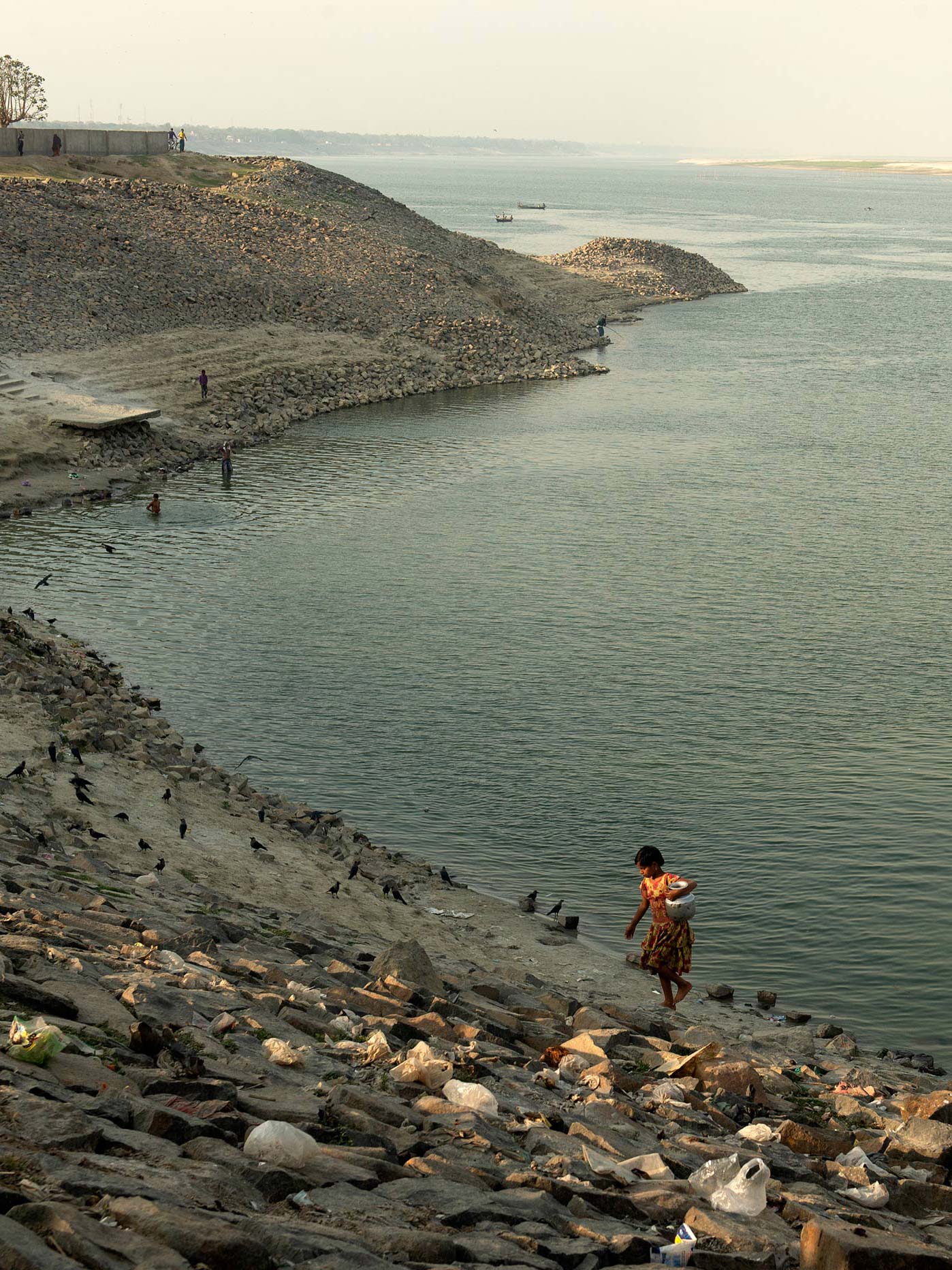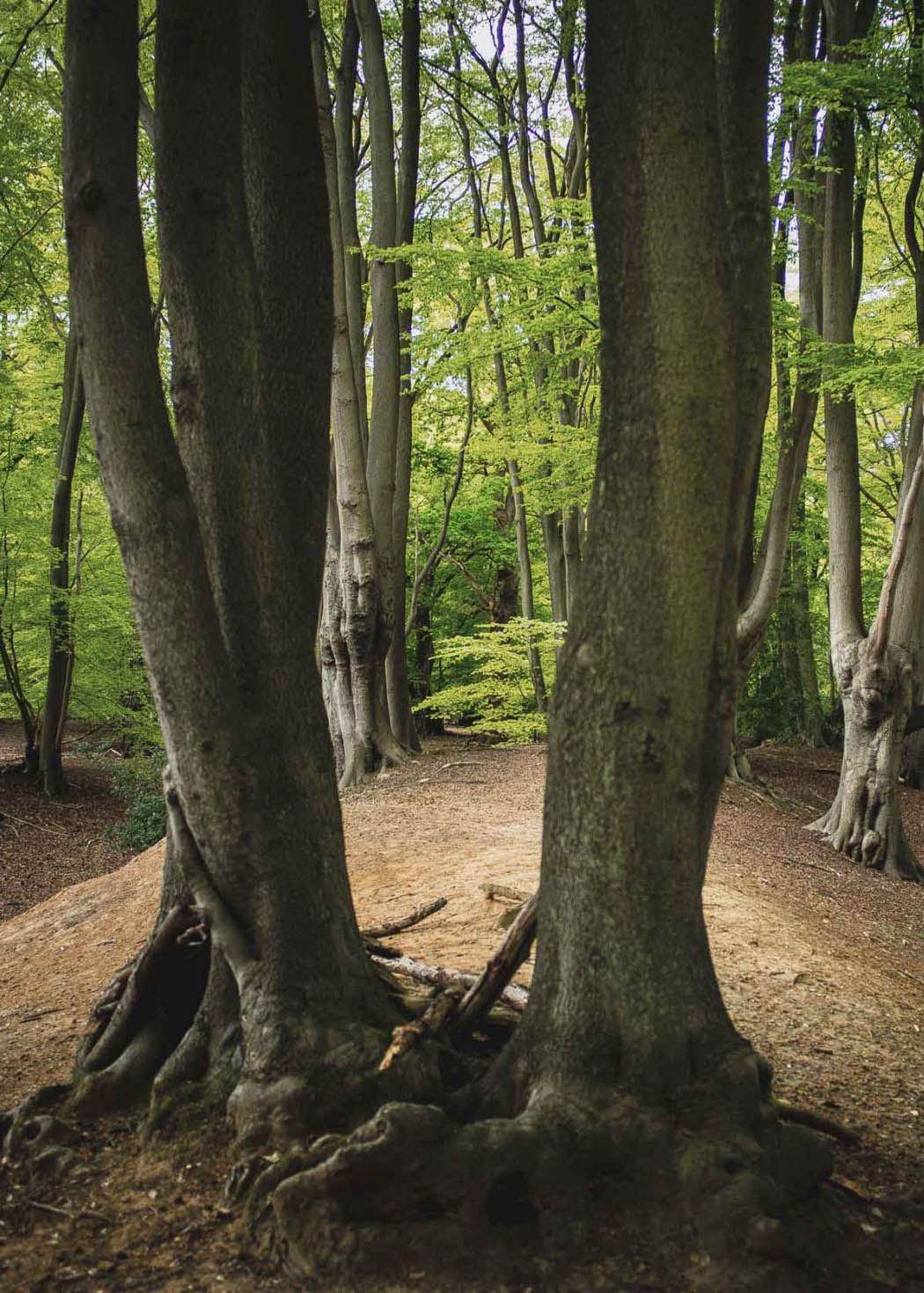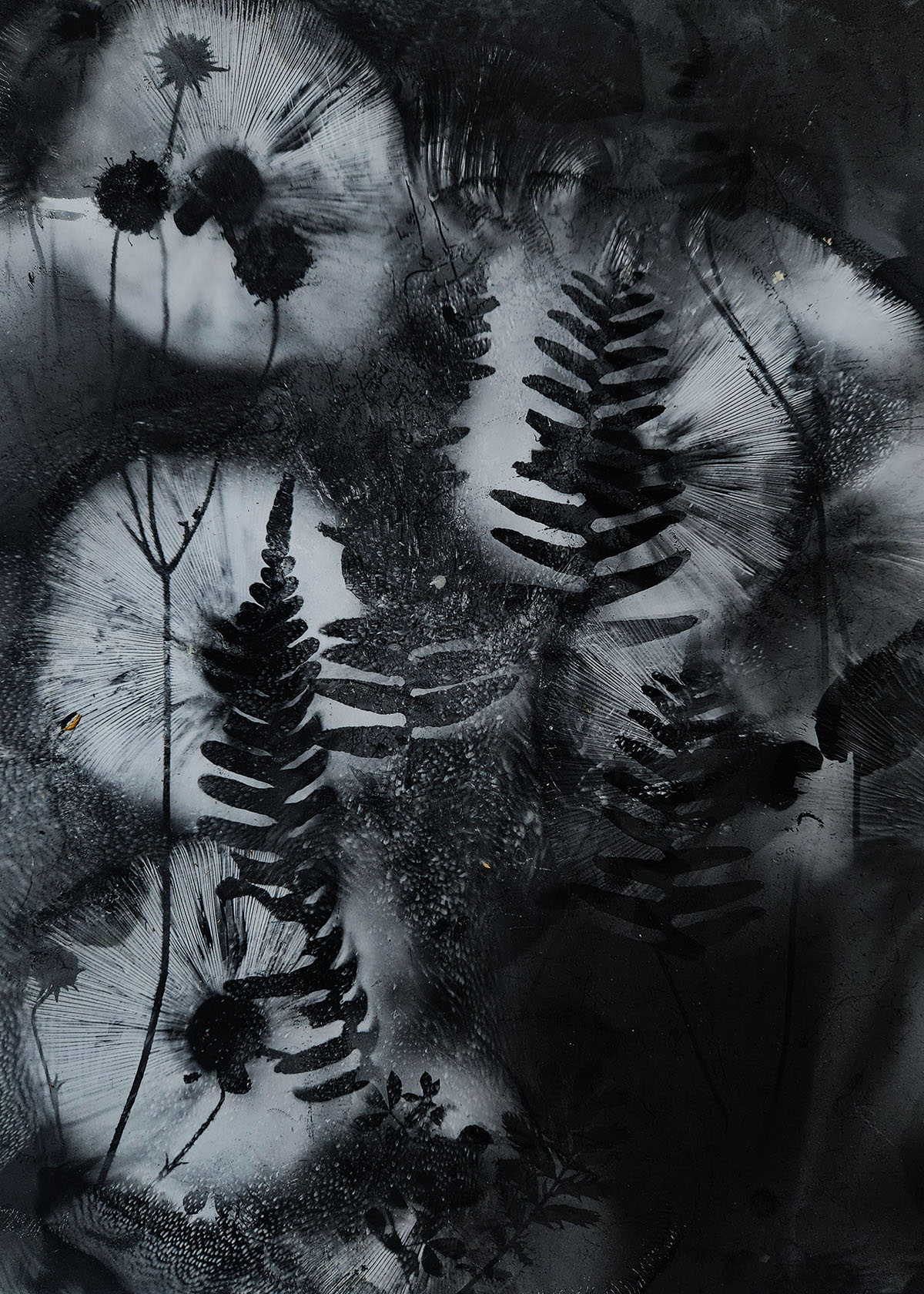
David Abram is a cultural ecologist, geophilosopher, and the founder and creative director of the Alliance for Wild Ethics (AWE). His books include Becoming Animal: An Earthly Cosmology and The Spell of the Sensuous: Perception and Language in a More-than-Human World. David recently served as the Senior Fellow in Ecology and Natural Philosophy at Harvard Divinity School.
Merlin Sheldrake is a biologist, writer, and speaker with a background in plant sciences, microbiology, ecology, and the history and philosophy of science, whose research ranges from fungal biology and the history of Amazonian ethnobotany to the relationship between sound and form in resonant systems. He received a Ph.D. in tropical ecology from Cambridge University for his work on underground fungal networks in tropical forests in Panama, where he was a predoctoral research fellow of the Smithsonian Tropical Research Institute. He is a research associate of Oxford University and the Vrije University Amsterdam, the UK Policy Lead at the Fungi Foundation, Director of Impact at the Society for the Protection of Underground Networks (SPUN), and the 2025 Distinguished Visiting Fellow at the Center for Human Rights and Global Justice, NYU. His book, Entangled Life: How Fungi Make Our Worlds, Change Our Minds, & Shape Our Futures won the Royal Society Book Prize and the Wainwright Prize, and has been translated into thirty-two languages. Merlin is also the presenter of Fungi: Web of Life, a giant-screen documentary narrated by Björk. A keen brewer and fermenter, he is fascinated by the relationships that arise between humans and more-than-human organisms.
Madge Evers is an artist based in western Massachusetts who uses foraged materials to explore decomposition and regeneration. Blending photography, cyanotyping, painting, and mushroom spore prints, her works reference photosynthesis and the ancient collaboration in mycorrhiza. Her work has been published in Antennae: The Journal of Nature in Visual Culture.
Exploring the many kinds of selves that compose our breathing biosphere, cultural ecologist David Abram and mycologist Merlin Sheldrake assert the selfhood and agency of the fluxing multitudes with whom we share the Earth. Published in partnership with the More Than Human Rights (MOTH) Project, and following the project’s inaugural symposium, this conversation reimagines the legal frameworks through which we define rights and well-being for the more-than-human web of life.
David Abram: The symposium was for me an eye-opening encounter with courageous judges, lawyers, philosophers, scientists, and legal scholars from different lands, all of whom are in heartfelt service to something much larger than ourselves—larger than our individual and egoic concerns, larger even than the well-being of our particular species. We were all drawn together by our bodacious love and concern for the wider and much wilder community of earthly agencies, for the whole cantankerous collective of what you so aptly call “entangled life.” And this made for a very convivial gathering indeed, surging with reflective insights and conundrums, but one that also held space for grief—the grief that most of us were carrying in relation to the vast and unprecedented losses in the human and more-than-human community—and also for some music-making. Each of these are necessary ingredients for any sort of wisdom—for thinking, that is, not just with our abstract intellects, but with the whole of our creaturely selves, reflecting with the entirety of our feelingful, intelligent organisms. Our sensate bodies, after all, provide our sole access to all these other animals, to the plants and the fungi, to the rainforests, the rivers, the surging winds and the gathering storms.
Merlin Sheldrake: I found this convergence enormously inspiring. I was left with a sense that interdisciplinarity is a superpower. This is a recurring theme in the history of life: by coming together, radically different organisms can extend their reach and achieve things that none of the individual players—whether bacterium, alga, fungus, animal, plant—could achieve by themselves. Lichens are wonderful examples of this. When a volcano creates a new island in the middle of the Pacific Ocean, the first things to grow on the bare rock are lichens, which arrive as spores or fragments carried by the wind or birds—likewise when a glacier retreats. Whenever it was that lichens occurred for the first time, their very existence implies that life outside the lichen was less bearable. Viewed in this way, lichens’ extremophilia, their ability to live life on the edge, is as old as lichens themselves, and a direct consequence of their symbiotic way of life. I had the sense that one of the things we were doing was exploring ways to form a lichen that could rise to the many challenges of reimagining legal frameworks in our times.
From my perspective as a biologist, interdisciplinarity is satisfying for other reasons. What we call arts and sciences both arise from our faculties of imagination, wonder, and curiosity—regarding the phenomena unfolding around us and regarding our own ability to meaningfully experience these phenomena. The bifurcation between the “sciences” and the “arts”—itself founded on a centuries-old bifurcation of the world into “primary” quantities and “secondary” qualities—has erected all sorts of confusing boundaries that we stumble over, mistaking them for natural features of our minds. Scientists, lawyers, judges, artists, and philosophers are—and have always been—emotional, creative, and intuitive, whole human beings, navigating worlds that were never made to be cataloged and systematized. All have to interpret and communicate their insights, often ambiguous, uncertain, and contradictory, using imaginative language composed of metaphor and analogy. I think we’d all have much more fun if we could dispel the delusion that these activities belong in entirely different departments of human life.
DA: I completely agree with you. Many of the matters that snagged my attention at our gathering had to do with language—with how we choose to articulate certain conundrums, with the words and phrases that we deploy in order to make sense of things. Obviously, this has particular import when we’re speaking of the law, where phrases are codified in a manner that will inform legal cases sometimes far into the future. And the ways that we speak profoundly influence our sensory experience. Words have this remarkable efficacy, a kind of dangerous but splendid magic: they transform the world by altering our perception of the world. Words can enliven our senses, opening a wild and luminous vibrance in things we earlier took for granted—the soil underfoot, for instance, or a river, or even the wind blustering its way through the city streets. But words can also stop up our ears and cloud our eyes, stifling our spontaneous somatic empathy with other beings and with the animate landscape surging and gesticulating all around us.
One topic that came up over and again at our gathering had to do with the question of how we refer to those more-than-human entities to which—or to whom—we accord rights. Such entities may be entire species of animals or plants or fungi, or particular populations, or individual organisms. More commonly they might be ecosystems: river systems or forests or wetlands or particular mountains. But in order to ensure that an entity has legal standing, that an ecosystem has or holds inherent rights that can be defended in a court of law—the right to flourish, for example, and to cyclically replenish itself without disruption by excessive dumping of human-generated toxins—many insist that such entities be recognized as “legal persons.” In order to have legal standing, they say, a threatened wetland should be accorded “legal personhood.”
Clearly, this is a result of the circumstance that, until recently, human persons (and human organizations) were the sole holders of rights—as in the inalienable rights to “Life, Liberty, and the pursuit of Happiness” enshrined in the US Declaration of Independence, or those articulated in the splendid Universal Declaration of Human Rights, adopted unanimously by the United Nations in 1948. These landmark documents mark luminous moments in our collective ethical unfoldment as a species. Yet it feels sad to see that now, when we seek to affirm the inherent right to flourish of other organisms and ecosystems, we can do so only by viewing them as though they were human beings, as persons.
Obviously, it’s an understandable move, especially since those seeking to advance the legal protections and powers of corporations established the doctrine of “corporate personhood.” By this doctrine, powerful economic interests are now accorded many of the rights that individual persons hold under the law, even though the purely profit-based interests of most corporations often conflict with the life-based interests of human beings. But do we really feel that rainforests or mountains or river systems are honored by according them the same status as corporations and business interests, which are, after all, purely human creations? Do we really feel that the interests of a mountain lion or a cloud forest are being respected if and when they are considered as persons?
MS: I was fascinated to learn, at the symposium, about little-discussed areas of the law that can shed light on how normalized legal terms like “personhood” have become. For instance, someone explained to me that, in shipping law, a ship can often be represented in court as a legal person. Of course, corporations are given personhood when they are formed into a body in the process of incorporation. When we assign personhood within existing legal frameworks, we assume that we are empowered to do so. But who really gets to decide what counts as a person—what counts as a who? Many of these legal frameworks arose at a time when whole groups of humans were routinely denied personhood.
I wonder about the first time in the history of legal practice when personhood was granted to a corporation or a ship. Did this seem far-fetched to the decision makers of that time and place? There seems to be some absurdity here—the stuff of comedy. Perhaps someone should write an opera about the wranglings that must have ensued. An attorney singing an aria on behalf of a ship, represented in court for the first time. Perhaps law would start to look more like a theater for creative thinking if we spent time in the drama of these historical shifts in the theory and philosophy of law.
This makes me think about the way that legal frameworks have evolved. Perhaps one can think of them using the metaphor of a city like London. Much of modern law is like the once-Roman city that became a medieval city, much of which burned down in the seventeenth century, was rebuilt in the eighteenth, and bombed and rebuilt again in the twentieth, and so on. Perhaps bringing more-than-humans into the theory and philosophy of law is like trying to rewild a metropolis, to remember that humans have only ever been a small fraction of the city’s inhabitants.
DA: I love your metaphor of the city that’s slowly built and rebuilt upon itself, layer upon layer, in different eras, while whole swaths are sometimes destroyed and restructured—and now wild creatures are beginning to roam the streets of this palimpsest metropolis! That’s a powerful image by which to think about this process of opening up the edifice of law to include other animals, plants, fungi, and ultimately the interlaced ecosystems that surround and support our settlements.
But the English word person has been almost exclusively associated with human beings for an exceedingly long time. Hence, according personhood to a woodland, a wetland, or a wolf seems to imply that only those entities who are sufficiently like us to be construed as persons are worthy of holding rights. Just as the doctrine of corporate personhood seems not to discern that the exclusively profit-based interests of corporate shareholders are often very different from the varied interests of most persons (in friendship, say, or in community, or in beauty), so the affirmation of legal personhood for an elk herd or a mountain seems hardly to notice the unique intelligence of these entities, the myriad ways in which their interests may radically differ from our own.
Nonetheless, some may feel that legal personhood converges neatly with Indigenous, animistic lifeways, with First Nations understandings that all things are (at least potentially) alive and expressive, such that the surrounding terrain is experienced as a dynamic field of intertwined and actively intertwining agencies. Drawing upon Irving Hallowell’s anthropological research among the Ojibwe, at least one contemporary scholar of religion, Graham Harvey, interprets animism as a belief “that the world is full of persons, only some of whom are human.”1 After decades of petitioning by the Māori people, the granting of legal personhood to the Whanganui River by the New Zealand government in 2017—making the river a legal person in the eyes of the law2—would seem to follow this logic: assuming that legal personhood rhymes with the Indigenous respect for the river as an animate presence radiant with powers that nourish and sustain the human community. And we can only applaud such fine breakthroughs!
Still, I can’t help but feel cautious, concerned that the Indigenous, deeply oral tradition of respect for the spiritual power and personality of a river may easily be distorted from its traditional meaning by conflating it, for legal reasons, with settler notions of being a person. I worry that the inevitable association with human persons may keep the river’s perspective from overflowing the banks of our more limited and shortsighted human concerns. The long-standing acknowledgment of corporate personhood by many countries makes this a real concern, somewhat blunting the hopefulness I feel in having legislatures acknowledge the personhood of rivers or forests.
We need a much broader, more expansive sense of life—perhaps a more playful and mischievous sense of vitality.
MS: Yes, not to mention the fact that defining a person is far from straightforward when one takes a biological perspective. Life is a story of wild intimacies and relationships, and any sustained look at the living world reveals that individual organisms aren’t so much natural facts as categories that depend on our point of view. For instance, a substantial proportion of our genome has been acquired from viruses, and we carry around more foreign bacteria than cells of our own, without which we would not grow and behave as we do. Our microbial relationships are about as intimate as any can be, but we are not a special case. Bacteria host smaller bacteria and viruses within them. The intricacy of these webs of relation raises interesting questions. What are you calling an individual person? You have to enclose and define your subject matter somehow; otherwise systematic investigation would be impossible. So the question of where you draw the line becomes a question rather than an answer known in advance. In addressing these questions, there are some basic guidelines that can help us avoid the worst pitfalls of reductive thinking. We might emphasize the importance of context, lean into ambiguity without forcing a resolution one way or another, and focus on relationships between entities as much as the entities doing the relating.
Many of our concepts—from time to chemical bonds to genes to species—lack stable definitions but remain helpful categories to think with. Individuality is another such category, and it certainly does useful work for us. But it evidently leads us into trouble. Our individualism shapes the way we form connections with each other and affects the distribution of resources and responsibilities. By imagining ourselves as neatly separable—from one another and the ecosystems that sustain us—we are able to justify both the exploitation and oppression of other humans, and ecological devastation.
DA: Another problem rests in the fact that when a river system (or other natural entity) is accorded legal personhood, then that river might also be brought to court and sued for damages when and if farms lose their croplands or companies lose their electricity due to the river’s flooding.
In recognition of these and other problems, some at the gathering floated other possible designations for natural entities as legal rights-bearers. One term proposed as an alternative to personhood was beinghood. This would avoid the overly human associations with personhood, since all things or entities are already beings by definition. Beinghood merely acknowledges that their being is noticed and affirmed; we recognize that they have rights simply by virtue of existing. Yet that might appear a somewhat flimsy support on which to hang rights. One feels that rights accrue to a subject, to an agential presence with a perspective, not merely to something passively floating in being.
Rob Macfarlane’s suggestion was perhaps the most interesting: he spoke of “ancestral beinghood.” I took his idea to mean that something has natural rights if it is affirmed not just as a being, but as an ancestral being—as a presence, like a great river or a mountain, that has preexisted and will (hopefully) outlast our most immediate human lives and concerns, an elemental power whose long-standing presence has nourished, informed, and offered tacit guidance to generations of humans and other animals, and to myriad other beings who dwell in its vicinity.
Yet not all more-than-human entities whose rights we might wish to protect are ancestral in this sense. Certainly a species, like polar bears, or a population, like boreal woodland caribou, would be an ancestral power relative to various communities in the far north, yet an individual caribou or polar bear would not likely qualify as an ancestor. A long-standing glacier might invite that designation, while a newly formed mountain lake fed by the melting of that glacier might not. And there are many places and presences that might not have caught the attention of human communities at all—particular caves, old factory chimneys that now serve as communal roosts for many thousands of swifts, haul-out sites for sea lions in the North Atlantic that were not noticed by humans until recently, and so might not be considered ancestral powers from our perspective but that nonetheless deserve our utmost care and protection.
MS: Of course.
DA: I wonder if a more useful juridical designation for rights-holders—one that sidesteps the human-centered associations of personhood and the overly passive and floating sense of beinghood—might be selfhood. Having or being a self, in common parlance, signifies something rather more focused and agential than simply having being; a self is the sort of subject-like presence that one would readily associate with having rights. Selfhood implies the capacity to act, and to experience, to feel and to suffer and to enjoy as well. Selfhood conveys just what many folks seem to want to convey by using personhood, but without the human-centered overtones. And yet self remains a remarkably open and democratic notion, a quality accessible to any and all things, since—at least in English—we can affirm of anything (woodland, wetland, toad, boulder, compost heap, beehive, or eroding mountain) that it manifestly is itself, or its self.
The notion of self, in other words, is rather subversively animistic. The English language reflexively attributes a kind of self to all things, even to rocks and to words and to cumulous clouds—“the darkening sky feels ominous, today, but that cloud itself has a beguiling shape”—yet as soon as we stop to consider the term, we realize that selves are feelingful, qualitative presences. All things and beings are selves, yet by adding the suffix -hood—by affirming a river’s or an ecosystem’s selfhood—the legislature of a country would be picking out a particular self and honoring it, underscoring its inherent rights in order to protect it from undue and unnecessary harm.
MS: This terminology could include nested selves, webs of selves, composite selves, fluidly intermingled selves, and all the rest. I find it a helpful term partly because it puts us in mind of the point of view of the self in question.
DA: Precisely!
MS: I think of selves as loci of experience. Selfhood, as a term, serves to remind us that the self in question has a perspective, no matter how inscrutable to a modern human, and so can perhaps help us break through the subject–object duality that continues to vex all sorts of discourse. For instance, the fact that we are having a conversation about MOTH rights in the first place is evidence of the fact that the world has already been sorted into living entities capable of subjective experience and those which are nonexperiencing objects unworthy of rights or equivalent legal protections. The term selfhood can perhaps steer us toward the core of this issue by restoring subjectivity to entities denied a point of view by this unfortunate ontological bifurcation.
DA: Beautifully stated! Now, some sort of distinction might still need to be drawn between the “born” and the “made”—that is, between earthborn selves and those that have been fashioned (out of earthborn materials) by human beings to serve exclusively human purposes. ’Cause at this historical juncture it’s not so much human-made artifacts and technologies that need our protection, but rather earthborn powers and places that deserve our utmost attention and care.
It’s worth acknowledging, too, that selfhood is far from static; an oak or a forest remains itself even as the character of that tree, or the composition of that woodland, is steadily shifting—just as I, too, am an ongoing process of evolution and metamorphosis. A self is not a determinate, fixed identity, but a way of unfolding, a process, a style of changing to meet the ever-shifting circumstances. And it bears mentioning that selves are constituted by their relationships to others. A self or subject is not an enclosed being, but rather a nexus of relations to other selves. Just as I, or myself, am informed and composed by the myriad relations I sustain with other people and other beings (a beloved piano, some Lyme spirochetes, the coyotes whose collective howls wake me up most nights) and with the places that enfold me, so natural selves, too, are relational—informed and constituted by their relations with other selves.
MS: Quite so. We are multitudes, composed of and decomposed by the vast populations of microbes that live in and on us. And, of course, we are all embedded within and constituted by constant fluid interchange with our surroundings, through our breath and numberless other thermodynamic fluxes. The matter that makes up your body today is different from the matter that will make up your body in a few years. Your self is not a stable thing but rather a field of stability through which matter is passing—much like a river, a whirlpool, or a weather system.
I find it helpful to take this perspective when we start to wrestle with some of the questions about the rights of ecosystems, including rivers and watersheds. We are all ecosystems composed of nested ecosystems. We are also rivers of matter and energy flowing through time. Thus we know that assigning protection to ecosystems is possible because existing human rights frameworks are already in the business of protecting the rights of complex entities made up of multiple organisms. This means that ontological questions about selfhood and individuality are not only confusing but also reassuring. If we are already fluxing multitudes then we have proof of concept that legal frameworks can be designed to handle more complex fluxing multitudes like forests.
DA: Wow. That’s quite a mischievous notion, eloquently articulated. And it’s true.
One of the most promising consequences of using the terminology of selfhood, rather than legal personhood, might be the way that considering the selfhood of a wetland or a forest or a high desert canyon immediately jibes with the old folk tradition sense of a genius loci, of a spirit power or intelligence that watches over, or inhabits, or simply is the collective mind of that very place—its unique sentience or self. This harmonizes well with the experiential understanding common to many traditional peoples—and which was powerfully articulated at our gathering by Kichwa spokesperson Patricia Gualinga3—that the forest is looked after and permeated by a spiritual power, or presence, that humans must honor if they wish to enter and interact with the forest. Obviously, this could also be true of an active or even a dormant volcano, a cloud forest, a coral reef, or a river estuary.
There are abundant traces of this old, oral form of deference toward the larger-than-human powers of place in ancient literatures from around the world. In the Gilgamesh epic, Gilgamesh and Enkidu set out to destroy the great cedar forest, cutting it down for wood. Yet to do so, they must first beguile and slay Humbaba—the wild guardian spirit of that forest, the shapeshifting sentience of that ancient ecosystem.
A thousand miles to the west and a thousand years later, another epic tells of how half-drowned Odysseus, exhausted after eighteen days drifting on a makeshift raft that was then wrecked by Poseidon’s fury, catches sight of the rocky island of Scheria. Trying to keep his head above water, Odysseus spies a small river mouth and prays to the spirit of that river that it might allow him to swim safely in to shore without being dashed on the rocks—and straightaway the river takes him in.
Places have power. The dynamic mix of plants, animals, fungi, and minerals that compose any habitat, interacting with the waters and weather patterns that circulate through that place, ensures that there’s a unique intelligence to each ecosystem, a specific sentience with its own calms and turbulences, its own moods that affect and alter our moods whenever we’re in that terrain. Maybe it’s this that we seek to respect, however obliquely, when we speak of the selfhood of a place.
MS: And, of course, the individuality of places is no less problematic than the individuality of organisms. Your body is a planet with regard to your resident populations of microbes. Fungi are planets with regard to their resident populations of bacteria, and so on. The Amazon and tropical forests in Central and South America are fertilized by the dust that blows over from the Sahara. And the rivers of water vapor that flow in the sky from the Amazon irrigate North America. The planet is crisscrossed by flows and cycles. This is another example of the trouble that we encounter when we try to isolate one entity from another. The question becomes one of how you choose to divide up intermingling fluid flows and where you draw the line between these entities. Ecosystem, river, organism, watershed—these are categories that depend on our point of view. So what is our point of view, then, when we are imagining these new ontological and legal frameworks?
DA: Right. Once we acknowledge the wider, place-based self-at-large—the distributed intelligence of a wetland, say, or the genius loci of a high mountain pass—we still need to acknowledge that no earthly ecosystem or bioregion is closed in on itself. Each ecology is in dynamic and open-ended exchange and interplay with the other ecosystems that bound it. Ultimately there’s no purely self-subsistent subject or ecosystem or self (or person), but only the interlaced lattice or webwork of dynamically unfolding bodies, a lattice that—considered in its broadest sense—has a roughly spherical shape, composing as it does the outermost layers of our planet. So ultimately, we might want to (quietly) admit that the only real self or fully coherent subjectivity here is really the vast biosphere itself—this immense spherical metabolism—and that your and my apparently separate selves, like those of a river system or a storm cell, are just internal expressions of the wider self of the biosphere, of the anima mundi. Each of us—you, me, and the Amanita muscaria—is an embodied expression, or avatar, of the animate Earth.
From this Gaian perspective, wherein we recognize the whirling planet as our larger Body, each relatively coherent bioregion, or ecosystem, might be considered a unique tissue or organ of the larger metabolic entity, an organ of the breathing Earth. Clearly the Amazonian rainforest, with its outrageous biodiversity, has long played a unique role in the planetary metabolism—stabilizing the climate, releasing vast amounts of water into the atmosphere every day, modulating the carbon cycle and water cycles. But analogous roles are played by every bioregion—mountain ranges conjuring clouds out of the fathomless blue, oceans with their tides flushing nutrients and their currents modulating climatic patterns, temperate forests, ice-bound regions in the far north and south. Desert biomes, too, likely play multiple roles crucial to the health of the wider biosphere. And each bioregion invites (and likely requires) a unique modality of human culture, particular styles of human association and exchange. The ever-spreading human monoculture fostered by capitalism (with a Starbucks on every street corner, and an Apple superstore in every downtown) seems fairly toxic to the exquisitely differentiated ways of Earth’s metabolic organs or ecosystems, and hence deadly to the exuberant flourishing of this polyrhythmic biosphere!
I suppose this brings us far afield from thinking about rights, about the rights of a wetland or a fungal-infused woodland, or a river valley. Because a living body needs all its organs to flourish, and so we would not assert that a nose or a heart or a lung has rights over any other part of the body. Rather, it’s the whole body that is struggling to breathe! In this sense, it surely seems that a discourse of responsibilities would serve us better than a discourse of rights when speaking of the more-than-human natural world. Shouldn’t human communities, like human corporations, and countries too, have legal responsibilities to promote and safeguard the healthy flourishing of the ecosystems that they interact with (the organs and tissues of our wider planetary Flesh)? Shouldn’t corporations be liable—shouldn’t they be held accountable—if they neglect those inherent responsibilities? If they greatly harm another species or inflict lasting damage upon the lands that they inhabit, the waters and winds that they interact with?
MS: There is indeed something odd about us humans extending rights to the rest of nature, given that all our human rights depend upon and take for granted the ongoing flourishing of the earthly biosphere.
Your self is not a stable thing but rather a field of stability through which matter is passing—much like a river, a whirlpool, or a weather system.
DA: So perhaps our human rights tacitly derive from the more-than-human earthly world, rather than the other way around.
Another thought worth mentioning regarding this animistic propensity that’s happily creeping into our legal discourse: it’s mighty gratifying that legislatures are beginning to honor the rights not just of other species but of rivers and mountains and elemental powers that have for so long been viewed as inert. Indeed, it feels especially important that we accord some kind of agency not just to the overtly biological aspects of our world but also to the rocky substrate of things, and to the waters and the weather—to those parts of the world that have heretofore been considered utterly inanimate. Because as long as we assume that there is some basic layer of the world that is definitively inert, without any agency or dynamism whatsoever, then it is likely—inevitable, I think—that we’ll continue to conceptualize the world in a hierarchical manner, as a “ladder” or a “great chain of being,” wherein a purely passive and inanimate layer of matter provides the foundation upon which we set certain “lower” organisms—those ostensibly exhibiting a very minimal amount of “life” (lichens are sometimes forced into this role). Above those we situate other organisms that we think have a bit more vitality, erecting a conceptual pyramid wherein plants are positioned above lichens but underneath certain “lower” animals (like barnacles), themselves arrayed beneath more ambulatory animals with successively “higher” degrees of life, with humankind of course positioned at or near the top, just under the angels and the pure, bodiless freedom of God.
And then, inevitably, even within humankind such a way of thinking will construe certain groups as closer to the inertness of matter, or as “closer to the animals” —i.e., women, people of color, the Indigenous—while exalting one’s own kind as closer to pure spirit.
I think that any such hierarchical framing of the wild, polymorphic proliferation of styles of existence is a kind of madness—driven by a terror of ambiguity, and a consequent craving for rational order and control at all costs. It’s a madness that has underwritten the reckless exploitation of the living land and its many denizens for purely human benefit, even as it has licensed the horrific exploitation and enslavement of some (ostensibly “lower”) humans by other (presumably “higher”) humans. If, however, we affirm that matter is animate or self-organizing from the get-go, then we pull the rug out from under any and all such pyramidal and self-serving hierarchies. Because there’s no longer any inanimate foundation upon which to erect such conceptual (and societal) hierarchies.
But this does not mean that we cannot draw distinctions! On the contrary, it is that dualistic bifurcation of the world into inanimate stuff, on the one hand, and animate stuff, on the other, that precludes a recognition of the outrageous diversity and anarchic multiplicity of the Real, obscuring the subtle and resplendent differences between beings!
MS: It’s a perspective that reminds us of how difficult it is to draw a clean line between life and nonlife. The scholar Jack Forbes has a wonderful passage where he explains that one could cut off his arms and he would live, likewise, cut off his ears or his nose and he would still live. But take away the air he needs to breathe and he would die. Take away the water he needs to drink and he would die.4
The conventional subject matter of physics and chemistry, commonly referred to as strictly “physical processes”—fluid dynamics, melting, freezing, chemical reactions, flows of energy, etc.—determine the possibilities and evolution of living organisms. Living organisms then feed back biological information into these same “physical processes,” determining new climatic and geological possibilities. The rules determine the game and the game determines the rules. Biological organisms in a sense domesticate physical processes. Our bones, like the shells of tortoises, are domesticated minerals. And, yet, a large proportion of the mineral mass in the biosphere was originally created by living organisms. Our bodies are full of tides and weather systems, chemical weather systems, flow systems, vortices. Life fades into nonlife so gradually that it’s actually hard to locate a border, let alone police one.
DA: So we need a much broader, more expansive sense of life—perhaps a more playful and mischievous sense of vitality.
This brings me to think of the more fluid manner in which verbal language is used among traditionally Indigenous cultures. The vital importance of stories, and storytelling, came up at various points during our gathering, especially at those many junctures where the participants affirmed the importance of adopting and even incorporating Indigenous perspectives regarding the more-than-human world. Indigenous, place-based cultures tend to be traditionally oral cultures—that is, cultures that developed and flourished, generation after generation, millennium after millennium, without any highly formalized system of writing. Such deeply oral cultures are, necessarily, cultures of story. In the absence of a formal writing system, all of the ancestrally gathered information, regarding how to live well with one another, and with the other creatures, plants, and powers in a particular terrain, must be carried in stories—information regarding, for instance, how to fashion a canoe from tree-bark, or which plants are good for healing particular ailments, or how to detoxify certain fungi when preparing them as foods. All such knowledge accumulated by one’s ancestors must be encoded and held in the layers and intersecting threads of the tales that are told and retold, generation after generation, within any oral culture.
It is a stupendous thing—really a wonderful circumstance!—that Indigenous, oral wisdom is finally and increasingly being heard, attended to, and valued within courts of law in various countries. Yet I’ve noticed that highly literate persons with elaborate graduate degrees often misconstrue the storied knowledge that circulates within traditionally oral, Indigenous communities. For instance, as persons from literate and urbanized societies begin to value the insights carried by oral peoples, we have a tendency to assume that Indigenous peoples understand in a literal fashion the teachings that are expressed within their traditionally oral stories. Yet, from my field research in Southeast Asia and the Americas, I simply do not think that oral peoples take their stories literally. Literal truth, as the word itself suggests, is an artifact of literacy. It originally meant “being true to the letter of the law”—that is, “to the letter of scripture.” For something to be literally true meant that it matched what was written down in the sacred texts. Gradually, over the centuries, alphabetic civilization transferred the apparent fixity of the written-down text to our literate sense of the ostensibly fixed, factual nature of the world at large. And so, today, after I give a talk, someone might say to me: “David, you spoke of slipping into conversation with a lichen-encrusted boulder. But c’mon, really: Is it literally true that the rock spoke to you?”
To which I would have to answer “No. It is not literally true. And yet it surely did speak to me.” For I am trying to articulate a truth that is much older, and deeper, than literal truth.
I think that this is how it is with much of the storied knowledge, or wisdom, of oral-tradition peoples. They are often using language in a manner somewhat different from the way we’ve become accustomed to wielding words in our highly alphabetized culture. For deeply oral cultures, each perceived thing has its unique dynamism and agency, and all things are expressive—all have the potential for meaningful speech—although most things do not speak in words.
MS: There are many ways to communicate, yes, and words are just one medium in which to do so.
DA: And hence orality and literacy yield very different ways of speaking, indeed very different notions of what language is, and what it is good for. Literate folks spend a great deal of time talking about the world—about the weather, about that mountain over there, etc. Traditionally oral peoples spend just as much time talking to the world—to the winds, to the forests—and then listening for the reply of those beings. Our Indigenous allies are wielding their words in a more participatory manner, more deeply and playfully than most of us overeducated persons tend to wield our words. So as we begin to incorporate Indigenous insights and ways of understanding in courts of law, I reckon it’s really important to stay attuned to and to distinguish between these very different ways of speaking and not assume, or pretend, that they articulate reality from the same vantage. One is much older—and it invokes a vastly different experience, a more full-bodied and more participatory engagement with the more-than-human natural world—than the literate, literal way of wielding our words.
Of course, laws, constitutions, statutes, rulings—these are manifestly written-down things; indeed, the whole body of the law, as practiced today, seems to be born of the written word. Hence, opening up the highly literate world of jurisprudence to the necessary and profound wisdom carried by Indigenous, oral cultures is hardly a simple endeavor. It takes enormous subtlety and skill, since oral wisdom subverts—even upends—many long-standing assumptions undergirding the conventional practice of jurisprudence.
MS: I find musical polyphony a helpful metaphor to think about the ways that different voices—or different ways of knowing and observing—might interact with each other in generative ways. Polyphonic music involves voicing more than one part or telling more than one story at the same time. In polyphonic music, melodies intertwine without ceasing to be many. Voices flow around other voices, twisting into and beside one another. And, yet, when listening to polyphonic music several streams of consciousness commingle in the mind and a multitude of parts can coalesce into a single piece of music that doesn’t exist in any one of the parts alone. The living world is polyphonic, full of unknowably large multitudes of selves improvising their way through time. I’m excited to imagine legal systems that more fully acknowledge the ways in which humans participate and communicate in this wet wildness.
This chapter is part of a forthcoming volume, edited by César Rodríguez-Garavito: More Than Human Rights (NYU MOTH Project 2023).
- Graham Harvey, preface to Animism: Respecting the Living World, (New York: Columbia University Press, 2005), p. xi.
- Matthias Kramm, “When a River Becomes a Person,” Journal of Human Development and Capabilities 21, no. 4 (August 2020): 307–19. Kramm’s paper offers a useful discussion of the “Te Awa Tupua Act,” adopted by the New Zealand Ministry of Justice in March, 2017, which assigns to the Whanganui River the “rights, powers, duties, and liabilities of a legal person.”
- Patricia Gualinga is the Director of International Relations of the Kichwa Indigenous People of Sarayaku.
- Jack Forbes, Columbus and Other Cannibals: The Wetiko Disease of Exploitation, Imperialism and Terrorism (New York: Seven Stories Press, 2010).
